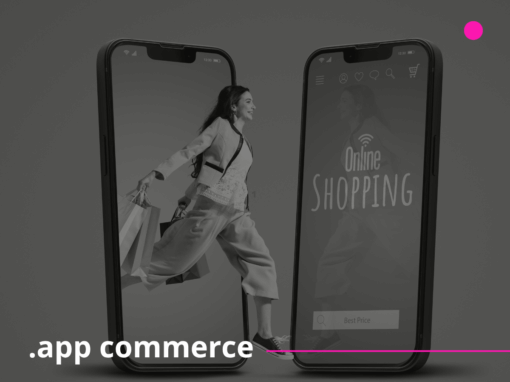E-commerce is undergoing a major transformation with the rise of purchases made directly through mobile devices. In this context, m-commerce, or mobile commerce, has been rapidly gaining ground, driven by the increasing use of smartphones and the increasingly digital behavior of consumers.
This shift directly impacts retail, which must rethink its approaches to serve customers seeking convenience, speed, and personalization. The accelerated growth of this segment is changing how brands connect with their audiences — from creating more responsive interfaces to integrating with social media and fast payment methods.
Success in digital commerce increasingly depends on the ability to adapt to the behavior of the connected consumer. And to reach that level, you need to stay informed. Stick with us and learn more about this topic.
What is the Current Landscape of the Mobile Commerce Market?
Statistics confirm the rise of m-commerce. According to recent Salesforce research, 72% of consumers already use their smartphones to shop online — a number that continues to grow as new technologies emerge and the browsing experience becomes more intuitive.
This analysis clearly shows that this growth reflects both the evolution of e-commerce platforms and a shift in consumer habits.
With the popularization of shopping apps, the use of digital wallets (used by 51% of Brazilians), and the rise of social media as sales channels, modern consumers find a practical and convenient way to purchase products and services through their smartphones.
In addition, trust in mobile transactions has increased in recent years, further encouraging the use of these devices as a primary shopping tool.
What Are the Advantages of Mobile Commerce?
It’s no secret that m-commerce provides a much smoother shopping experience. Mobile-optimized interfaces, simplified navigation, and fast payment processes all contribute to greater user satisfaction. Therefore, companies that invest in usability and mobile adaptation are more likely to keep customers engaged and reduce cart abandonment rates.
Moreover, conversions tend to involve higher values when the mobile shopping journey is well structured. Features like personalized notifications, behavior-based product recommendations, and social media integration help create an environment that supports decision-making.
As a result, brands that use mobile-first and omnichannel strategies achieve significantly better outcomes, solidifying their presence in the digital space.
The evolution of m-commerce also brings operational impacts to businesses. Real-time data analysis, precise audience segmentation, and the ability to test new marketing approaches lead to more effective campaigns, better investment returns, and quicker adaptation to market trends.
How Do Major Brands Work with Mobile Commerce?
As you might expect, companies across different industries have already recognized the opportunities in m-commerce and implemented strategies to expand their mobile presence.
Nike, for example, offers personalized experiences through its apps, such as the Nike Training Club, which connects users with trainers and recommends products based on their profiles. The company also uses artificial intelligence to generate highly accurate product suggestions within its app.
Sephora, on the other hand, has transformed its app into a beauty hub where customers can virtually try on makeup using augmented reality, access tutorials, and receive personalized recommendations. The app’s interactive experience boosts engagement and encourages repeat purchases.
Época Cosméticos has invested in integrating social media with its mobile e-commerce, enabling customers to discover products through influencers and complete their purchases seamlessly via smartphone or tablet.
This combination of social commerce and mobile experience optimization has produced impressive results for the company, which now has over 1 million registered users.
What to Expect for the Future of M-Commerce?
In the coming years, m-commerce is expected to evolve significantly, incorporating new technologies that will make the mobile shopping experience as natural as on a desktop. Augmented reality, for example, will allow consumers to try products before buying — something already happening in sectors like fashion and beauty. This feature is likely to become more widespread, reducing uncertainty and improving conversion rates.
Voice shopping is also gaining ground, boosted by the increasing use of virtual assistants like Alexa, Google Assistant, and Siri — used by 48% of Brazilians. As these systems become more accurate, voice commands will likely become a relevant channel for digital commerce.
Omnichannel integration will be another key factor in the future of m-commerce. The ability to move seamlessly between different channels — such as physical stores, apps, and social media — without disrupting the customer experience will be a major differentiator for brands aiming to attract and retain customers. The challenge will be to connect these touchpoints intelligently and fluidly.
How Can Companies Adapt to Mobile Commerce?
To keep up with this transformation, companies must make mobile-focused decisions. The first step is to ensure their websites and platforms are responsive and optimized for mobile devices. Additionally, investing in proprietary apps can be a competitive advantage — if they provide relevant features to the consumer.
From there, usability must be a priority, ensuring that the shopping journey is intuitive and frictionless. Simplified checkout processes, fast-loading pages, and personalized recommendations are all key to driving results.
It’s also essential to adopt a mobile-first marketing approach, including push notifications for engagement, behavior-based targeted campaigns, and social media integration. Constant data analysis is also fundamental to understanding consumer behavior and adjusting strategies as needed.
To wrap up, we want to emphasize that mobile commerce is shaping the future of digital retail. Companies that anticipate this shift will have a greater chance of growing and establishing themselves in the market. So don’t fall behind — start the transformation your business needs today.
Get in touch with us and discover how we can help you through this transition.




